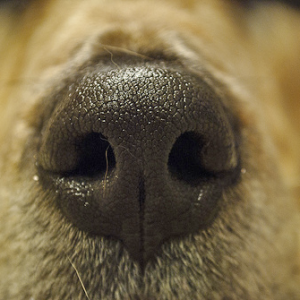The “Demodectic Mange” or “Demodicosis” has been described in all mammals and many wild and is strictly specific species. Two or more species of Demodex can sometimes infest the same species of hosts but will always occupy different ecological niches. The name of the site carries, with the exception of some cases, the name of the guest; so in the case of the dog, we have Demodex Canis. This is one of the complications with hyperkeratosis among dogs as well. You can look at this site for more information.

What is
The demodectic mange is a skin disease caused by this mite that lives in the hair follicles and in the sebaceous glands as commensal of almost all dogs, feeding on cells and sebum, it can live and reproduce for the entire life of the host without showing signs of its presence, but in some subjects it may be able to create severe dermatitis with diffuse alopecia.
- Demodex Canis is a small mite that measures 0.15-0.25 mm in length, of a completely different appearance, very different from that of the other mites. It has a thin and tapered body, a horseshoe-shaped head; anterior part called podosome with 4 pairs of atrophied limbs that end with a formation similar to a nail, back part called opisthosoma twice as long as the podosome to cone shape with cross stripes.
The entire life cycle is carried out entirely on the guest. The immature forms are represented by the larva with three pairs of sketched limbs, by the nymph with four pairs of limbs but not yet fully developed and by the eggs characterized by a particular shape that resembles that of pistachio. The transmission of mites occurs exclusively from mother to pups in the first days of life by direct contact; the only exception is dogs born by cesarean section and those not breast-fed. As already mentioned, these mites are diners of most dogs; if they start to multiply in a tumultuous and excessive way, then there is the development of the disease which has a long and variable incubation.
The Area of Certainty
What is certain, however, is that the immune system plays a decisive role in the onset of the disease; in fact, in elderly subjects, the presence of this mange is always secondary to a concomitant disease that lowers the immune defences. Mange can also occur following treatments with immunosuppressive drugs, which weaken the animal’s responses, causing real infestations.
Last Words
The disease is more common in young dogs but may develop in immune suppressed older dogs. Demodicosis is about three times more common in purebred dogs than in mongrels and occurs frequently among litters of bitches that may seem clinically healthy. There are particularly affected breeds such as German shepherd, Chow Chow, Pug, Scottish Shepherd, Shar-pei, Boxer, English setter, Great Dane, Dalmatian, and Bobtail. There are two differentiated clinical forms based on the extent of the disease: the localized and the generalized form, both characterized in general by the absence of itching. The appearance and location of the lesions, not accompanied by itching, are often so characteristic as to suspect demodicosis.
